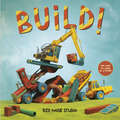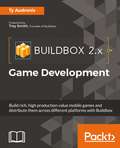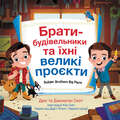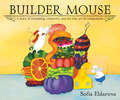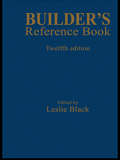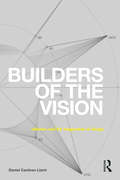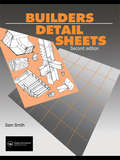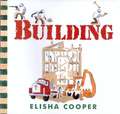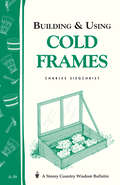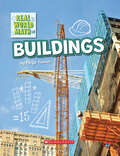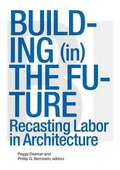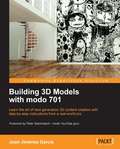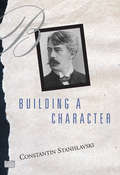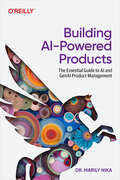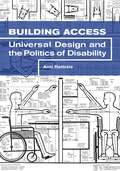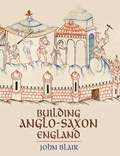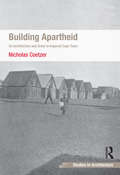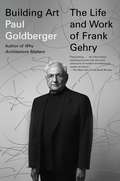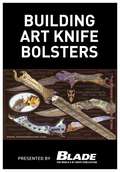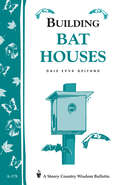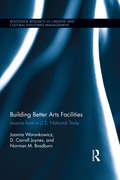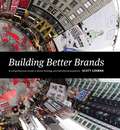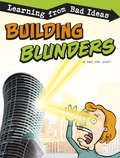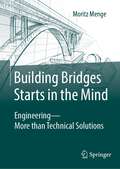- Table View
- List View
Build!
by Red Nose StudioFor all young truck lovers and fans of books like Goodnight, Goodnight, Construction Site! Watch a series of amazing construction vehicles—a dump truck, a bulldozer, and many others—build a building unlike any other. Then delight in the surprise ending, where young readers and listeners can see that the trucks are actually toys that a little boy is playing with!Bulldozers, dump trucks, and cranes are just a few of the vehicles working together in these pages to build something incredible. The payloader makes the hole for the foundation ("DIG"), the semi-loader brings in the huge blocks ("HAUL"), and the crane lifts them up ("HOIST"). But is this a real construction site, or a boy's backyard? And after the structure is done, what happens next? Yes, the inevitable: he makes it all tumble down and is ready to start all over again! Here is an ingenious book that showcases all kinds of trucks and celebrates the joy of imaginative play. But it is also a marvel of ingenuity on the part of Red Nose Studio, who has hand-built each of the trucks, as well as the construction site, then photographed his 3-D creations. As added value, the inside of the jacket—which pictures each vehicle and a simple description of what it does—can be hung in a child&’s room as a poster.
Buildbox 2.x Game Development
by Ty AudronisBuild rich, high production value mobile games and distribute them across different platforms with Buildbox About This Book * Create captivating 2D & 2.5D (isometric) video games for all platforms * Leverage Buildbox to monetize and prepare your games for distribution * This step-by-step tutorial will get you generating complex and media rich games with no coding experience Who This Book Is For This book caters to those who have an interest or desire to create their own mobile games either as a hobbyist or who are looking to enhance their skills as a professional games developer. No coding experience is required. What You Will Learn * Create the illusion of a 3D background in your game using parallax * Add advanced controls and obstacles to our first world * Develop assets (graphic and audio) for the Buildbox engine * Design games based on the capabilities and limitations of Buildbox and their target platforms * Compile and distribute video games on various channels such as Steam, iOS store, Android stores, and the Mac App Store * Optimize your games to get the absolute best quality within platform restrictions * Conquer common issues experienced with Buildbox development In Detail Buildbox is an "any skill level" development platform to develop video games with no coding experience. It also exports these games to be compiled for any platform (from Windows to Mac to iOS to Android and Blackberry) all using the same graphic user interface. Using an example as a tutorial, we will relate the driving principles and you'll see how you can implement these principles to develop any games on the platform. We begin by setting expectations and providing a brief overview of the software. But it's not long before you "dive in" to creating your first video game. You will actually have a playable level ("world") by the end of the second chapter. Later on, you'll learn everything from basic graphics creation to advanced world design while you refine your first game, called "Ramblin' Rover." All along the way, you will see how certain functions could be used in tandem to create other types of games; hoping to spark imagination. We will follow the principles and process of monetization through ads and in-game rewards. Lastly, we will go through the process of exporting, compiling, and preparing your storefront to sell the games you will eventually create. Style and approach This book follows a tutorial-based approach that teaches through examples, while also providing the necessary principles to enable you to abstract these principles into any game you want to make.
Builder Brothers: Big Plans (Ukrainian Edition)
by Jonathan Scott Drew ScottTranslated by Dasha Peipon, writer, editor and teacher, who’s originally from Ukraine, and Larysa Tsilyk, a Ukrainian poet, HarperCollins Children’s Books is happy to make available in ebook format this picture book in the Ukrainian language for no charge in the hopes that it will bring joy to displaced Ukrainian children and their families.Drew and Jonathan Scott, New York Times bestselling authors and hosts of the Emmy-nominated hit HGTV show Property Brothers, bring their winning blend of imagination, humor, and can-do know-how to their first picture book.It all begins when Drew and Jonathan are doing what they do best—thinking up big plans for even bigger projects. Will they build a treehouse? A castle? A catapult? They have a whole lot of big ideas, but no one thinks they can do any of them!The twins brainstorm, scribble, and tinker until they have the perfect big plan. They’ll save every last penny, sketch out some designs, and make a whole lot of noise—builders aren’t known for being quiet—because they know that little kids can do big things.But what will Drew and Jonathan do when their big plans don’t go the way they’d hoped? Find out in this heartwarming new story from everyone’s favorite twins.And the book comes complete with an original do-it-yourself building project that parents and kids can tackle together at home. Everyone knows that every big plan starts with a dream!
Builder Mouse
by Sofia EldarovaTwo mouse friends have two distinctly different uses for leftovers. Edgar loves to build with them. Toby loves to eat them. This makes life challenging. So Edgar sets out to find someone who will appreciate his creations as art, and not as lunch. This sly, appealingly understated, and warm-hearted book is the American debut of the author/illustrator Sofia Eldarova.
Builder's Reference Book
by Leslie BlackA comphensive guide to information sources relevant to the building industry and legislation affecting it. It is designed for use as a tool either in the office or on site, giving facts in a compendium style to meet the most common requirements of the busy builder.
Builders of the Vision: Software and the Imagination of Design
by Daniel Cardoso LlachBuilders of the Vision traces the intellectual history and contemporary practices of Computer-Aided Design (CAD) and Numerical Control since the years following World War II until today. Drawing from primary archival and ethnographic sources, it identifies and documents the crucial ideas shaping digital design technologies since the first numerical control and CAD systems were developed under US Air Force research contracts at MIT between 1949 and 1970: the cybernetic theorization of design as a human-machine endeavor; the vision of computers as "perfect slaves" taking care of the drudgery of physical labor; the techno-social utopias of computers as vehicles of democracy and social change; the entrepreneurial urge towards design and construction integration; and the managerial ideologies enabling today’s transnational geographies of practice. Examining the contrasting, and often conflicting, sensibilities that converge into CAD and BIM discourses - globalism, utopianism, entrepreneurialism, and architects’ desires for aesthetic liberation - Builders of the Vision shows that software systems and numerically controlled machines are not merely "instruments," or "tools," but rather versatile metaphors reconfiguring conceptions of design, materiality, work, and what it means to be creative. Crucially, by revealing software systems as socio-technical infrastructures that mediate the production of our built environments, author Daniel Cardoso Llach builds a strong case for the fields of architecture, media, and science and technology studies to critically engage with both the politics and the poetics of technology in design. Builders of the Vision will be essential reading for scholars and practitioners across disciplines interested in the increasingly complex socio-technical systems that go into imagining and building of our artifacts, buildings, and cities.
Builders' Detail Sheets (Series 1)
by S. Smith Mr P Stronach P. StronachThis book contains a unique set of information sheets, covering all aspects of building from sit setting-out to roofs and floors. It gives builders and students of building a sound knowledge of materials, their properties and limitations, and shows the practice of using these materials for sound construction. The sheets also give information on the Building Regulations and how to comply with them.
Building
by Elisha CooperIt begins with an empty city lot and ends with a gleaming new building. But what happens in between? With his trademark sketch pad, watercolors, and sharp eye for atmosphere and detail, Elisha Cooper takes note of what goes on at a construction site -- from the obvious to the not-so-obvious. And curious young builders will relish his funny observations and unfailing scrutiny. There are backhoes that look like messy eaters, and lots of hammering that sounds like do-re-mi. Come see (and hear) the building -- it's going up now!
Building & Using Cold Frames: Storey Country Wisdom Bulletin A-39 (Storey Country Wisdom Bulletin Ser.)
by Charles SiegchristSince 1973, Storey's Country Wisdom Bulletins have offered practical, hands-on instructions designed to help readers master dozens of country living skills quickly and easily. <P><P>There are now more than 170 titles in this series, and their remarkable popularity reflects the common desire of country and city dwellers alike to cultivate personal independence in everyday life.
Building (Real World Math)
by Paige TowlerGrab your hard hat and get ready to use math to learn all about buildings!1 skyscraper … 2 houses … 3 castles—the world is full of buildings! Architects use math every day to design buildings. Join a real architect on an amazing adventure to recognize SHAPES, discover PATTERNS, COMPARE skyscraper sizes, and more. Then test your math skills with special You Can Do It challenges.This brand-new series demonstrates how math skills can be applied to high-interest topics and careers in Coding, Building, Tracking Animals, and Space Exploration. The K-2 math concepts include counting 1-100 with basic addition and subtraction, using the power of 10, measuring, and simple geometry. Real world scientists, architects, programmers, and mathematicians model hands-on, from-the-field experiences in a way that will make children excited to use and expand their math skills!
Building (in) the Future
by Peggy Dreamer Phillip BernsteinThere is no denying the transformational role of the computer in the evolution of contemporary architectural practice. But does this techno-determinist account tell the whole story? Are humans becoming irrelevant to the overall development of the built environment? Bulding (in) the Future confronts these important questions by examining the fundamental human relationships that characterize contemporary design and construction. Thirty-four contributors including designers, engineers, fabricators, contractors, construction managers, planners, and scholars examine how contemporary practices of production are reshaping the design/construction process
Building 3D Models with modo 701
by Juan Jimenez GarciaThe book will focus on creating a sample application throughout the book, building gradually from chapter to chapter.If you are new to the 3D world, this is the key to getting started with a modern software in the modern visualization industry. Only minimal previous knowledge is needed.If you have some previous knowledge about 3D content creation, you will find useful tricks that will differentiate the learning experience from a typical user manual from this, a practical guide concerning the most common problems and situations and how to solve them.
Building A Character (Bloomsbury Revelations Ser.)
by Constantin StanislavskiBuilding a Character is one of the three volumes that make up Stanislavski’s The Acting Trilogy. An Actor Prepares explores the inner preparation an actor must undergo in order to explore a role to the full. In this volume, Sir John Gielgud said, this great director “found time to explain a thousand things that have always troubled actors and fascinated students.” Building a Character discusses the external techniques of acting: the use of the body, movement, diction, singing, expression, and control. Creating a Role describes the preparation that precedes actual performance, with extensive discussions of Gogol’s The Inspector General and Shakespeare’s Othello. Sir Paul Scofield called Creating a Role “immeasurably important” for the actor. These three volumes belong on any actor’s short shelf of essential books.
Building AI-Powered Products: The Essential Guide to AI and GenAI Product Management
by Marily NikaDrawing from her experience at Google and Meta, Dr. Marily Nika delivers the definitive guide for product managers building AI and GenAI powered products. Packed with smart strategies, actionable tools, and real-world examples, this book breaks down the complex world of AI agents and generative AI products into a playbook for driving innovation to help product leaders bridge the gap between niche AI and GenAI technologies and user pain points. Whether you're already leading product teams or are an aspiring product manager, and regardless of your prior knowledge with AI, this guide will empower you to confidently navigate every stage of the AI product lifecycle. Confidently manage AI product development with tools, frameworks, strategic insights, and real-world examples from Google, Meta, OpenAI, and moreLead product orgs to solve real problems via agentic AI and GenAI capabilitiesGain AI Awareness and technical fluency to work with AI models, LLMs, and the algorithms that power them; get cross-functional alignment; make strategic trade-offs; and set OKRs
Building Access: Universal Design and the Politics of Disability
by Aimi Hamraie&“All too often,&” wrote disabled architect Ronald Mace, &“designers don&’t take the needs of disabled and elderly people into account.&” Building Access investigates twentieth-century strategies for designing the world with disability in mind. Commonly understood in terms of curb cuts, automatic doors, Braille signs, and flexible kitchens, Universal Design purported to create a built environment for everyone, not only the average citizen. But who counts as &“everyone,&” Aimi Hamraie asks, and how can designers know? Blending technoscience studies and design history with critical disability, race, and feminist theories, Building Access interrogates the historical, cultural, and theoretical contexts for these questions, offering a groundbreaking critical history of Universal Design. Hamraie reveals that the twentieth-century shift from &“design for the average&” to &“design for all&” took place through liberal political, economic, and scientific structures concerned with defining the disabled user and designing in its name. Tracing the co-evolution of accessible design for disabled veterans, a radical disability maker movement, disability rights law, and strategies for diversifying the architecture profession, Hamraie shows that Universal Design was not just an approach to creating new products or spaces, but also a sustained, understated activist movement challenging dominant understandings of disability in architecture, medicine, and society.Illustrated with a wealth of rare archival materials, Building Access brings together scientific, social, and political histories in what is not only the pioneering critical account of Universal Design but also a deep engagement with the politics of knowing, making, and belonging in twentieth-century United States.
Building Anglo-Saxon England
by John BlairA radical rethinking of the Anglo-Saxon world that draws on the latest archaeological discoveriesThis beautifully illustrated book draws on the latest archaeological discoveries to present a radical reappraisal of the Anglo-Saxon built environment and its inhabitants. John Blair, one of the world's leading experts on this transformative era in England's early history, explains the origins of towns, manor houses, and castles in a completely new way, and sheds new light on the important functions of buildings and settlements in shaping people's lives during the age of the Venerable Bede and King Alfred.Building Anglo-Saxon England demonstrates how hundreds of recent excavations enable us to grasp for the first time how regionally diverse the built environment of the Anglo-Saxons truly was. Blair identifies a zone of eastern England with access to the North Sea whose economy, prosperity, and timber buildings had more in common with the Low Countries and Scandinavia than the rest of England. The origins of villages and their field systems emerge with a new clarity, as does the royal administrative organization of the kingdom of Mercia, which dominated central England for two centuries.Featuring a wealth of color illustrations throughout, Building Anglo-Saxon England explores how the natural landscape was modified to accommodate human activity, and how many settlements--secular and religious—were laid out with geometrical precision by specialist surveyors. The book also shows how the Anglo-Saxon love of elegant and intricate decoration is reflected in the construction of the living environment, which in some ways was more sophisticated than it would become after the Norman Conquest.
Building Apartheid: On Architecture and Order in Imperial Cape Town (Ashgate Studies In Architecture Ser.)
by Nicholas CoetzerThrough a specific architectural lens, this book exposes the role the British Empire played in the development of apartheid. Through reference to previously unexamined archival material, the book uncovers a myriad of mechanisms through which Empire laid the foundations onto which the edifice of apartheid was built. It unearths the significant role British architects and British architectural ideas played in facilitating white dominance and racial segregation in pre-apartheid Cape Town. To achieve this, the book follows the progenitor of the Garden City Movement, Ebenezer Howard, in its tripartite structure of Country/Town/Suburb, acknowledging the Garden City Movement's dominance at the Cape at the time. This tripartite structure also provides a significant match to postcolonial schemas of Self/Other/Same which underpin the three parts to the book. Much is owed to Edward Said's discourse-analytical approach in Orientalism - and the work of Homi Bhabha - in the definition and interpretation of archival material. This material ranges across written and visual representations in journals and newspapers, through exhibitions and events, to legislative acts, as well as the physicality of the various architectural objects studied. The book concludes by drawing attention to the ideological potency of architecture which tends to be veiled more so through its ubiquitous presence and in doing so, it presents not only a story peculiar to Imperial Cape Town, but one inherent to architecture more broadly. The concluding chapter also provides a timely mirror for the machinations currently at play in establishing a 'post-apartheid' architecture and urbanity in the 'new' South Africa.
Building Art
by Paul GoldbergerFrom Pulitzer Prize-winning architectural critic Paul Goldberger: an engaging, nuanced exploration of the life and work of Frank Gehry, undoubtedly the most famous architect of our time. This first full-fledged critical biography presents and evaluates the work of a man who has almost single-handedly transformed contemporary architecture in his innovative use of materials, design, and form, and who is among the very few architects in history to be both respected by critics as a creative, cutting-edge force and embraced by the general public as a popular figure. Building Art shows the full range of Gehry's work, from early houses constructed of plywood and chain-link fencing to lamps made in the shape of fish to the triumphant success of such late projects as the spectacular art museum of glass in Paris. It tells the story behind Gehry's own house, which upset his neighbors and excited the world with its mix of the traditional and the extraordinary, and recounts how Gehry came to design the Guggenheim Museum in Bilbao, Spain, his remarkable structure of swirling titanium that changed a declining city into a destination spot. Building Art also explains Gehry's sixteen-year quest to complete Walt Disney Concert Hall, the beautiful, acoustically brilliant home of the Los Angeles Philharmonic. Although Gehry's architecture has been written about widely, the story of his life has never been told in full detail. Here we come to know his Jewish immigrant family, his working-class Toronto childhood, his hours spent playing with blocks on his grandmother's kitchen floor, his move to Los Angeles when he was still a teenager, and how he came, unexpectedly, to end up in architecture school. Most important, Building Art presents and evaluates Gehry's lifetime of work in conjunction with his entire life story, including his time in the army and at Harvard, his long relationship with his psychiatrist and the impact it had on his work, and his two marriages and four children. It analyzes his carefully crafted persona, in which a casual, amiable "aw, shucks" surface masks a driving and intense ambition. And it explores his relationship to Los Angeles and how its position as home to outsider artists gave him the freedom in his formative years to make the innovations that characterize his genius. Finally, it discusses his interest in using technology not just to change the way a building looks but to change the way the whole profession of architecture is practiced. At once a sweeping view of a great architect and an intimate look at creative genius, Building Art is in many ways the saga of the architectural milieu of the twenty-first century. But most of all it is the compelling story of the man who first comes to mind when we think of the lasting possibilities of buildings as art. From the Hardcover edition.
Building Art Knife Bolsters
by Joe KertzmanTake it from one meticulous knifemaker, the bolsters of an art knife are the centerpieces. John Lewis Jensen takes it easy on novice makers and enthusiasts by concentrating solely on the bolsters of his fancy art knife named "Alchemy." Jensen talks safety, materials, layering, grinding, sanding, drilling, tapping and attaching of the bolsters to the knife handle.
Building Bat Houses: Storey's Country Wisdom Bulletin A-178 (Storey Country Wisdom Bulletin Ser.)
by Dale Evva GelfandSince 1973, Storey's Country Wisdom Bulletins have offered practical, hands-on instructions designed to help readers master dozens of country living skills quickly and easily. There are now more than 170 titles in this series, and their remarkable popularity reflects the common desire of country and city dwellers alike to cultivate personal independence in everyday life.
Building Better Arts Facilities: Lessons from a U.S. National Study. (Routledge Research in Creative and Cultural Industries Management)
by Joanna Woronkowicz D. Carroll Joynes Norman BradburnAt the turn of the 21st century, a significant boom in the construction of cultural buildings took saw the creation of hundreds of performing arts centers, theaters, and museums. After these buildings were completed, however, many of these cultural organizations struggled to survive, or, alternatively, drifted off mission as the construction project forced monetary or other considerations to be prioritized. Building Better Arts Facilities: Lessons from a U.S. National Study examines the ways in which organizations planned and managed building projects during this boom, and investigates organizational operations after projects were completed. By integrating quantitative data with case-study evidence, the authors identify the differences between the ways some organizations were able to successfully meet the challenges of a large construction project and others that were not. With empirical evidence and analysis, this book highlights better practices for managing and leading cultural building ventures. Readers of this book – be they arts managers, politicians, board members, city planners, foundation executives, or philanthropists – will find that book provides valuable perspective and insight about building cultural facilities, and that reading it will serve to make building projects go more smoothly in the future.
Building Better Brands: A Comprehensive Guide to Brand Strategy and Identity Development
by Scott LermanBuilding Better Brands is the essential guide to creating and evolving brands. Leveraging three decades of brand consulting for legendary companies like Caterpillar, Harley-Davidson, 3M, Owens-Illinois, National Australia Bank, and American Express, as well as middle-market and new-media startups, Scott Lerman shares the processes and frameworks needed to build great brands.This book is for you if you're a CEO seeking to enhance your knowledge of the branding process, a marketing/communications specialist who wants to take a leadership role in advancing an organizations brand, a brand consultant who is striving to sharpen and extend your skills, or a student who wants to jump-start a career in branding.Whatever its starting point--market leader or struggling competitor--any organization that follows this step-by-step guide will end up with a better brand.
Building Blunders: Learning from Bad Ideas (Fantastic Fails)
by Amie Jane LeavittSee some of the world's biggest building blunders up close and personal. Find out how each structure failed, the basic building block that was missed during construction, and what engineers learned from their mistakes.
Building Boats that Float (Fun STEM Challenges)
by Marne VenturaWhat does it take to make a boat float? Gather some supplies and try it out for yourself! Discover tips and ideas on how to build the best boat around!
Building Bridges Starts in the Mind: Engineering - More than Technical Solutions
by Moritz MengeBeing a civil engineer is a fulfilling profession. Civil engineers design sustainable infrastructure. We build houses, roads, bridges, tunnels, cultural centres, towers and much more. We often bring all our engineering skills to bear to achieve solid solutions. And often even more, which lies beyond the technical art of engineering.The book looks beyond the technical solutions into the wider environment of civil engineers and reflects on their profession and their own attitude from a wide variety of perspectives. "Building bridges begins in the mind" means engaging in the search for connections - to a holistic professional image and to one's position as an engineer.
